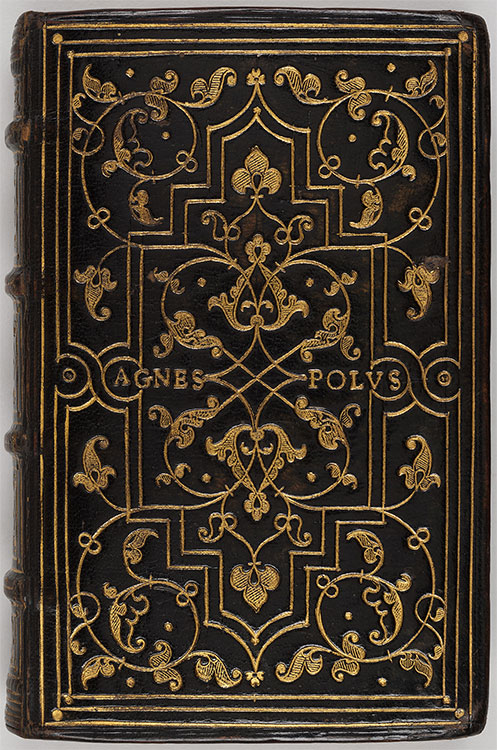
The binding of this devotional book is tooled in gold in a popular style of foliate ornament. First seen in Islamic manuscripts and artwork, this type of arabesque spread north into Europe through Italy and Spain, where it was used across an array of decorative arts. Reflecting the demand for such motifs, Holbein designed miniature book covers to be fabricated in gold and enamel as precious versions of gold-and-leather bindings. This example by an unknown artisan incorporates the name of the female patron for whom it was made.
Bound for Agnes Polus
Unknown binder
Calf leather, with gilt tooling on:
Heures à l’usage de Romme (Hours for the use of Rome)
Paris, ca. 1517
The Morgan Library & Museum, purchased by Pierpont Morgan, 1907; PML 1063
Islamic-inspired foliate ornament, known as the arabesque, was a common decorative motif in early 16th century Europe. It was especially popular among the Italian humanists, as well as those wishing to emulate humanist aesthetics. As the decorative style spread, it became a graphic emblem for erudition and literary acumen.
The French bookbinding on display is only one example of the Renaissance taste for this foliate ornament. At the center of the gold-tooled composition is a pair of intersecting lines, enclosed above and below by a three-petaled leaf motif. This same core design is also visible in the book-jewel study Holbein produced for Thomas Wyatt the Younger and his wife Jane, on the wall above. Each example includes the owners’ name—a detail that would have been highly unusual a few decades before, which underscores the era’s new emphasis on the individual. Although Agnes Polus, whose name appears on the cover, is yet to be identified, we can presume that she was an aristocratic or upper class woman who wanted her expensive prayer book bound to reflect the current popular style.
